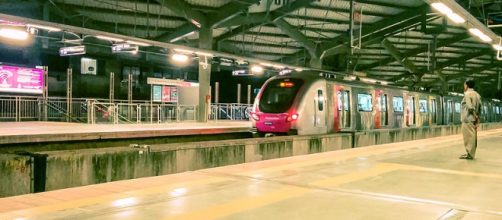The Metro-3 underground corridor will be nearly 33.5-Km long and will connect Colaba in South mumbai to SEEPZ in Andheri. It has been undertaken with a loan from Japan and is expected to reduce the burden on the existing suburban railway and road transport by bus. It will also eliminate greenhouse gas effects and the carbon footprint. Japan’s International Co-operation Agency (JICA) has extended a sizable loan to cover the cost.
Times of India reports that work has already started for the digging of tunnels 100 feet below ground level and men and machines are working round the clock to ensure its completion in time.
It is a joint venture between the Centre and the Maharashtra government, and the deadline for the entire stretch to become operational is 2021, according to the Mumbai Metro Rail Corporation.
It is a green initiative
The work on this Metro-3 underground corridor is, right now, a noisy affair with sounds of machines and men engaged in drilling and excavation work. These disturb the peace of the neighborhood, but it is for a good cause because once the Metro begins its operation, travel time will be drastically reduced. It is a part of a project to fight greenhouse gas effect because such a mode of transportation will eliminate pollution.
The authorities have taken care to ensure the safety of the citizens, and project-affected families have been shifted elsewhere.
The route will pass below many old and heritage structures of Mumbai and necessary precautions are being taken to ensure that these are not damaged due to vibration of the machines.
Advantages of the Metro
The route of the Metro-3 corridor will connect Colaba to SEEPZ (Santacruz Electronics Export Processing Zone, a special economic zone) in Andheri. It will have 27 halts, out of which 26 will be underground.
A section of activists and citizens' representatives have expressed fears of damage to buildings that are in the path of the metro. In their opinion, Mumbai has many old buildings that fall in the category of heritage structures which could be damaged due to vibrations. MMRC has confirmed that such a situation is a hypothetical one because superior technologies are being used in the construction of this mass rapid transit system, and advice of experts are taken when required.
Chief Minister Devendra Fadnavis had indicated that Metro-3 will be ready by 2022. It is necessary to cater to the growing needs of the city. The effect of greenhouse gas will also be checked once it takes off which will, in turn, arrest global warming. The MMRC, a joint venture between the Centre and the Maharashtra government, has set the deadline of 2021 for the entire stretch of the route.
Incidentally, the Metro has been running successfully in the other portions of the city for the last three years.


